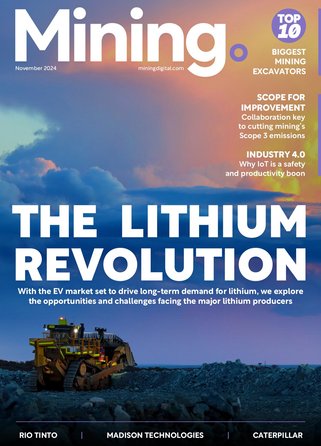Report predicts a looming copper supply gap

Copper demand is projected to double to 50m metric tons (mt) by 2035 with demand driven by overhauling national electricity grids, wind and solar power expansion, and the electric vehicle boom. To put the demand increase in perspective: the energy transition will need more copper than all the world has consumed from 1900-2021.
Global supply of copper, essential for a host of industries and crucial to green technology and the global energy transition, is expected to face a supply gap of nearly ten million mt within the next ten years, according to our new report.
Copper: Supply and demand
Years of underinvestment by copper producers means primary copper supply is ill-equipped to meet the approaching tidal wave of new demand. There aren’t enough mines, there aren’t enough near term producers, there aren’t enough high-grade ore bodies.
Based on its analysis set out in its report Copper: At The Centre Of The Metal Supercycle, The Oregon Group believes that we are in the early stages of an extended copper bull market. It believes there will still be some price volatility in the short term but is also convinced that long term growth is secured thanks to the accelerating transition to clean energy and the green economy, both of which are being supported by aggressive government legislation and funding. The supply of copper, essential for a host of industries and crucial to green technology and the global energy transition, is expected to face a supply gap of nearly ten million mt within the next ten years according to a new report.
The report examines key trends affecting global copper supply and demand. These include years of supply side underinvestment, rising geopolitical tensions, and exponential growth of industries connected to decarbonisation.
Thanks to the global green economy, copper demand is expected to nearly double by 2030. However, despite stark warnings from major copper producers in recent years, production has yet to recover from more than a decade of neglect. Dwindling ore grades, ageing mine infrastructure, higher development costs, and also minimal exploration in prior years means primary supply is badly equipped to cope with a major, sustained rise in demand. According to Bloomberg NEF, the upcoming supply shortfall could be so large that it could "hold back global growth, stoke inflation by raising manufacturing costs and throw global climate goals off course."
Overall, these trends will benefit a number of players in the copper market. Existing producers like Freeport-McMoRan, First Quantum, and Southern Copper have the potential to see continued strong profits from their copper production. Large development plays like Faraday Copper and also past producers with near-term production potential such as US Copper Corp. are well positioned to benefit once they move into their next phase of development.
ETFs and ETNs, such as the iPath Series B Bloomberg Copper Subindex Total Return ETN, Global X Copper Miners ETF, and United States Copper Index Fund are directly linked to the price of copper and will see strong value in a higher priced copper market.
- Inside Rio Tinto's Bold Transformation and Growth StrategyOperations
- ABB: Electrifying Lithium Mining at Nevada's Thacker PassSustainability
- US-China Rare Earths Agreement: The Mining ImpactSupply Chain & Operations
- Has USAR Found the Final Link in US Mine-to-Magnet Chain?Supply Chain & Operations



